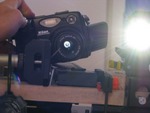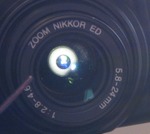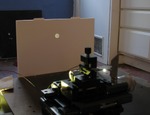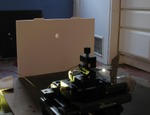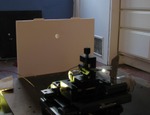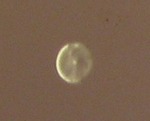Schlieren Photography - Super Zoom Cameras
So why are super zoom cameras bad for schlieren photography? It took me a while to figue this out myself.. I had assumed my problems were due to my setup or my mirror or some mistake I was having, but eventually I narrowed it down to the camera itself.
Super zoom camera lenses are complicated. Mine has 19 seperate lenses that all move around,
and various irises and other bits inside to make it all work. The problem stems from the
extreme angle the light is coming in from. The pictures below illustrate the issue.
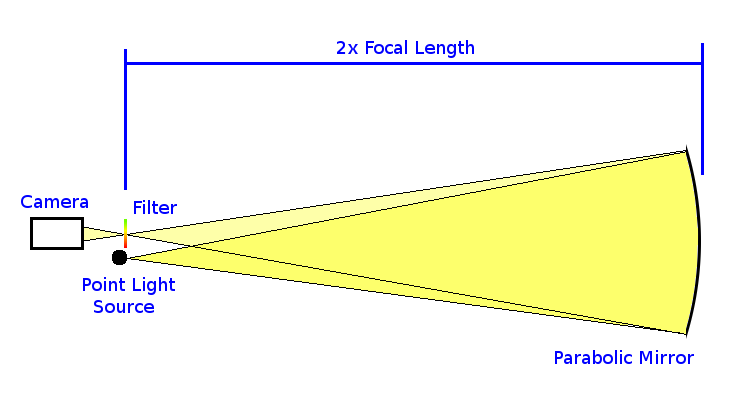
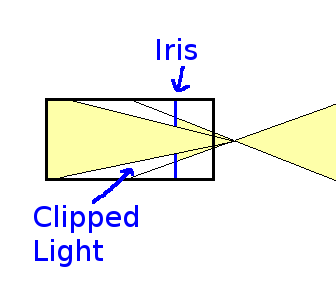
Normally when you zoom in, all the light hitting the lens is close to paralell with the lens
axis. But you can see that here the light spreads out VERY fast once it crosses the 2x focal
point. It quickly will hit internal parts if the camera and only allow you to see the
Schlieren effect in a smaller part of the mirror.
If you move the camera forward so the 2x focal point is inside the lens you can overcome this, but now you have another problem.. how to put a knifes edge or a color filter at the focal pont which is now inside the lens itself?
So far I have not figured this one out. I have played with corrective lenses but nothing has really come of that. Zooming out doesn't help, the lens still blocks, and no focusing tricks will work either, as for a good image you need to have the camera focused on the mirror surface.
The only solution is to use a DSLR with a fixed telephoto lens. They don't have all the complex lenses that a superzoom has and also have a much larger sensor and lens so they allow you to capture the light from the mirror edges. Of course, if you don't HAVE a DSLR thats not much help, as is my situation. Another issue is not many DSLRs have video recording ability. So far there are not many DSLR style cameras that can do video, let alone HD video which narrows it down further.
I will try and find a video camera with a removeable lens, and find a matching telephoto for it. That should at least let me do some nice video.
Direct imaging onto a CCD does work very well, at least for the reflected light. With a single lens you can focus the reflected image very sharply which gives very good results. However, taking the lens off a web camera or video camera is not very helpfull as the sensors they use are TINY. Like 1/4 of an inch or even smaller. At that size it's very hard to get the alignment and focusing right and the tiny size gives a lousy image anyways. But you can get 'ok' video out of such a setup.
Below are some images showing how to check your setup without using a camera. This can help if you are not sure if the problem is with the camera or the setup.
If you put something white back a ways from the light source and razor, you will get an upside-down view of what the camera would see. It will not be 100% in focus, but it will be good enough to see if what you have is working or not.
The first image is with the razor not intercepting any of the light. The second shows what it should look like with the razor in position. The circle now has a 3D look to it. The third shows a candle flame. Hard to see in these images, but you can see in the blowup there are wavy lins running from top to bottom. This is the heat coming off of the candle.
Back to my Schlieren Photography Page.
